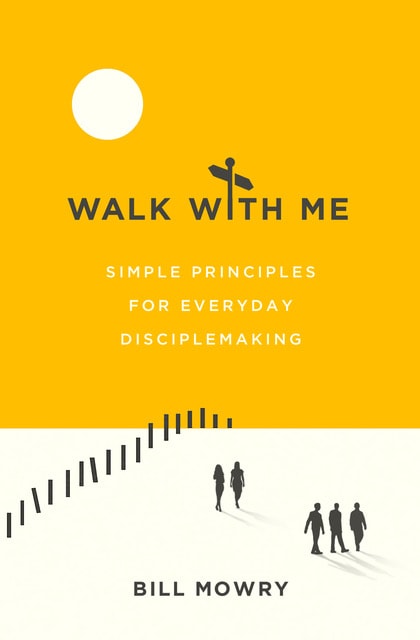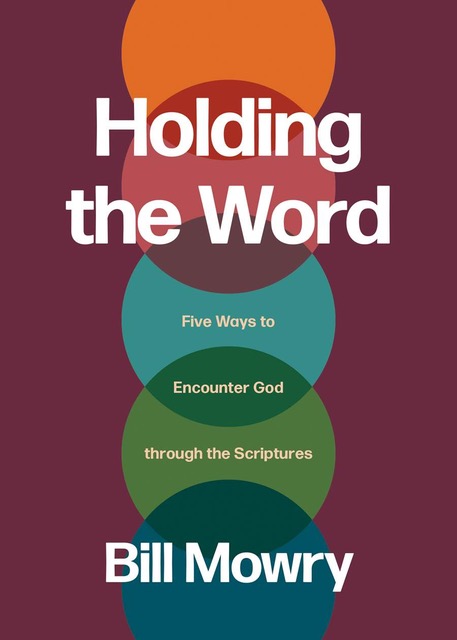Hunting for discipleship in the Old Testament – part one

Have you heard the story about the boy in the Sunday School kindergarten class? When the teacher held up a picture of a squirrel and asked the class what it was, the boy answered, “I think it’s a squirrel but I’m going to say Jesus!”
It’s easy to give the “Jesus” or spiritual answer to the question, “Disciples for what?” The “right” answer is “for the glory of God.” Who would dispute that? Another answer is the slogan “disciples make disciples who make disciples.” This sounds good but it turns the Great Commission into an assembly line. I’m still left with the question, “What do disciples do once they’re made? Is their task only to make more disciples?”
We must move beyond a “thin” description of a disciple — a definition lacking substance — to a “thick” or robust description of a disciple. We typically hunt for this description in The New Testament. The epistles provide systematic principles and teaching about a disciple’s life. This is great but we sometimes we need a picture that visually portrays principles in action. Where do we find such a picture?
An obscure little worship Psalm (Psalm 128) in The Old Testament paints a thick picture of a disciple.
“Blessed is everyone who fears the Lord,
Psalm 128
who walks in his ways!
You shall eat the fruit of the labor
of your hands;
you shall be blessed, and it shall be well with you.
Your wife will be like a fruitful vine
Within your house;
your children will like olive shoots
around your table.
The Lord bless you from Zion!
. . . Peace be upon Israel!“
Do you notice the flourishing words in this Psalm — “blessed,” “fruit,” “well with you,” “fruitful,” “olive shoots”? Exuberant life jumps out at us from this passage. The blessed life is a flourishing and fruitful life. This is abundant life as Jesus intended (John 10:10)!
Unfortunately, the word blessing can be another “Jesus” answer. “Blessing” is used so often that its meaning is lost. We hear the word again-and-again in songs, prayers, and spiritual conversations. The word becomes meaningless, trite, and common place. That’s a shame because blessing is such a rich concept.
Blessing is a complex word — it’s “thick” in meaning not thin. At its basic level, blessing means “to speak well of, to praise.” Author Michael Frost writes that part of the etymology of the term is “to add strength to one’s arm.” When we bless another, we fill them up with encouragement so they can increase in strength or prosperity.
In relationship to God, blessing means “to bend the knee, worship, praise, invoke blessings.” Author Eugene Peterson writes that, “Blessing pictures expanding our capacities and filling us with life so we can overflow with joy. . . . Blessing comprises the power to live in its deepest and most comprehensive sense.” Blessing is what God does to us in Christ (Ephesians 1:3); it’s not earned but given. What happens when you and I are blessed?
The blessed person chooses to “fear the Lord” (128:1,4). One commentator notes that blessing emphasizes the “bliss” of fearing God. Scholar Daniel Estes describes this fear as “embracing religious loyalty [to the LORD] as well as neighbor love. . . . All wisdom is grounded ultimately in one’s relationship with Yahweh.“ Fear is about relationship. How can this be?
“‘Reverence’ rather than fear might be a better word” writes Peterson. This reverence is a wonder and awe drawn from God’s majestic love (Ephesians 3:17-19); a love that drives out fear (1 John 4:18) and draws us to “walk in His ways” (128:1). Our Lord doesn’t frighten us to walk with Him but draws us through His majesty and love to a “friendship” (John 15:15). No wonder we’re blessed people.
I picture “fear” like sightseeing on the Grand Canyon’s edge. The Canyon is so beautiful and majestic that we can’t get enough of its splendor. We get as close to the edge as possible trying to get our arms around the canyon’s beauty. But if we’re too close to the edge, we soon look down, silently panic, and think about taking a step backwards. We love the canyon’s beauty but respect its depth. Such is the fear of God. We’re drawn to His majestic beauty and love but we respect how His grandeur makes Him different from us.
The Lord’s Prayer captures this tension. We address the Lord as “father,” a highly personal and heart-felt expression. In the next sentence, we’re to “hallow” or make holy His name. We’re drawn to a heavenly “papa” and stand in awe of His holiness. The Psalmist paints this relationship as a walk with God; a walk that shapes how we live (128:1).
The Bible is full of walking analogies. Noah (Genesis 6:9) and Enoch (Genesis 5:22) “walked with God.” “Walk” is used in Ephesians to describe the old life (2:1) and the new life (5:2). Estes writes that the biblical concept of walking “suggests a routine, [a] consistent faithfulness to Christ over the long haul.” In fact, walking and living are synonymous terms according to Estes.
“Walking” in the Bible pictures life lived in companionship with another. Walking is living; when we stop walking we start dying. The blessed person – the man or woman filled with joy, prosperity, strength, and encouragement – chooses our Lord as his lifelong love and companion. When we walk in companionship with God, closeness transforms our life’s orientation – His ways become our ways (128:1). Here’s how it works.
We’re naturally influenced by the people we walk with. Our closest friends influence and shape our lives. We consciously and unconsciously pick up their habits, values, and way of life; our ways become like their ways. Relationships shape who we are and what we do.
Forty-six years ago I began a relationship that continues to shape my life. John Ed Robertson was my first Navigator staff supervisor – my boss! This eager but arrogant twenty-five year old didn’t know what he was getting himself into. Our lives were linked for over two decades until the Lord took John home in a bicycle accident.
Over the years, John Ed moved from a supervisor to a mentor to a friend. We saw each other in the good and bad of life. He didn’t set out to teach me about leadership but he shaped how I practice leadership. Because we traveled life together I watched how he led. Even today I find myself thinking about an action and realize, “This is how John Ed would have responded in this situation.” I admired his leadership and unconsciously patterned my leadership after his model. Over time, his ways became my ways; relationships influence people.
As we walk in a close and pleasurable companionship with our Lord, His ways will naturally influence our ways. There is no change without closeness; there’s no life without a walk. If our ways of living are not influenced by His closeness then we worship a concept, we preach an idea, and we live a moral code. There’s a big difference between this kind of life and the blessed life. Like the Psalmist, I want to choose a rich blessed life!
What do disciples do besides make other disciples? Disciples recruit and help people live the blessed life of walking with God and living in His ways. We radiate the ways and character of God to others, blessing their lives because the Lord has blessed us.
But there’s more!
Blessing and walking is just the start of this life of discipleship. In my next blog, we will continue our hunt for discipleship in the Old Testament. You will be surprised at what we’ll discover.

Check out my latest book from Moody Publishers. Walk With Me: Simple Principles for Disciplemaking will help you simply, practically, and relationally disciple others where you live, work, or play. You can order at www.moodypublishers.com.


Leave a Reply